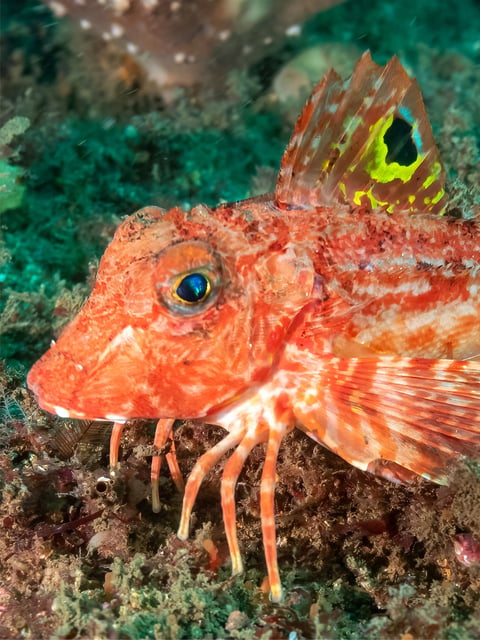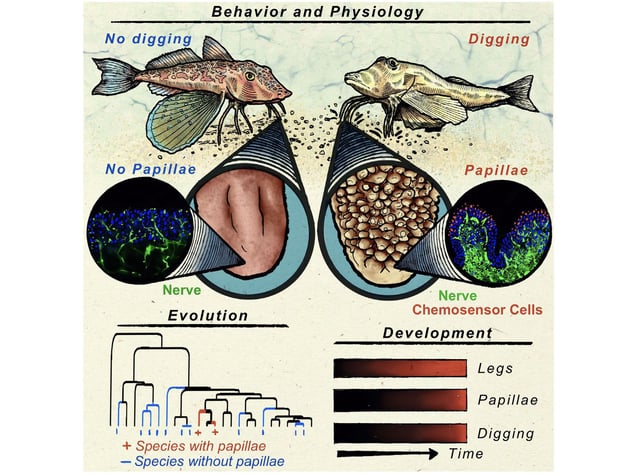Overview
- Sea robins, a type of bottom-dwelling fish, have six leg-like appendages that they use to walk and sense prey buried in the sand.
- Researchers discovered that these legs are extensions of the fish's pectoral fins and are equipped with sensory papillae similar to taste buds.
- The studies identified a gene, tbx3a, crucial for the development of these sensory legs and their digging behavior.
- Two species of sea robins were studied: Prionotus carolinus, which uses its legs to dig and taste, and Prionotus evolans, which does not.
- The findings provide insights into how evolutionary adaptations can repurpose existing genetic tools to create new traits.



